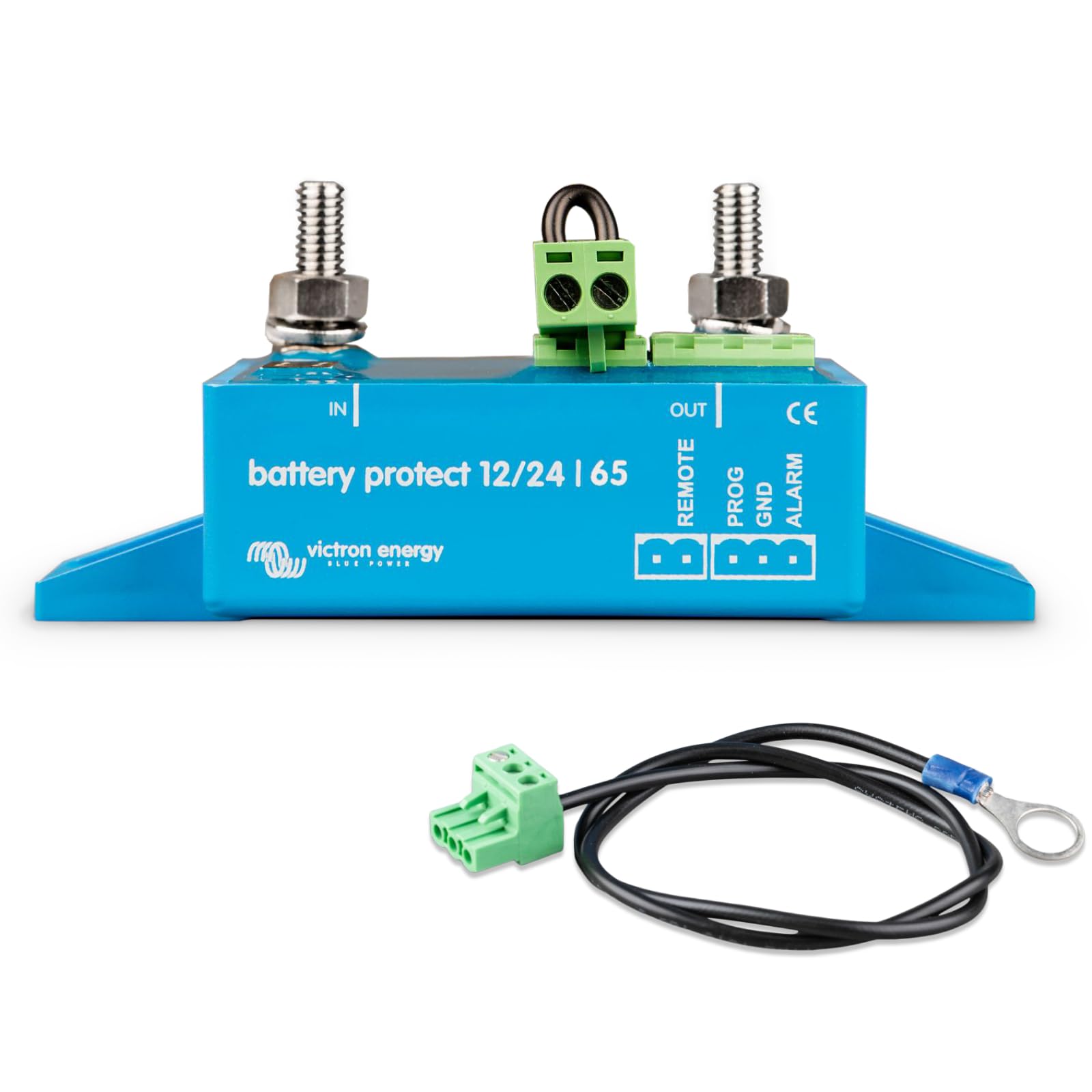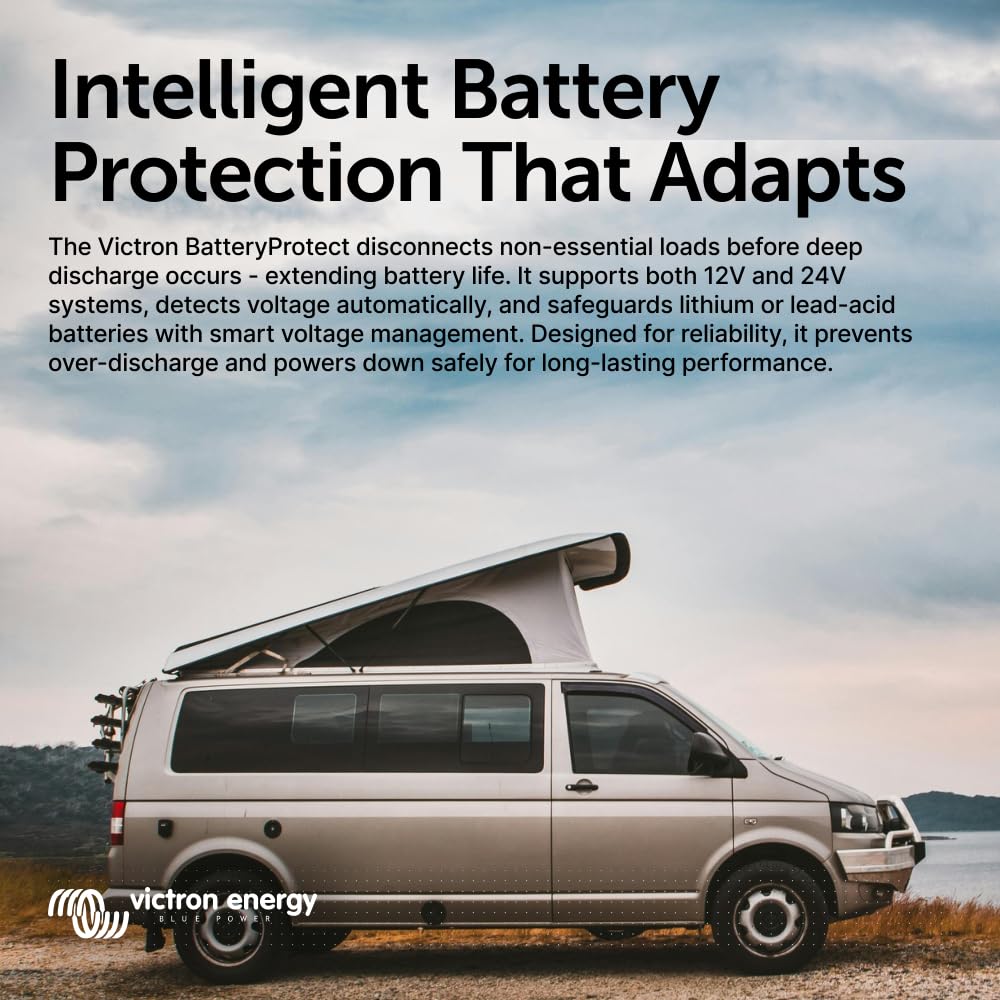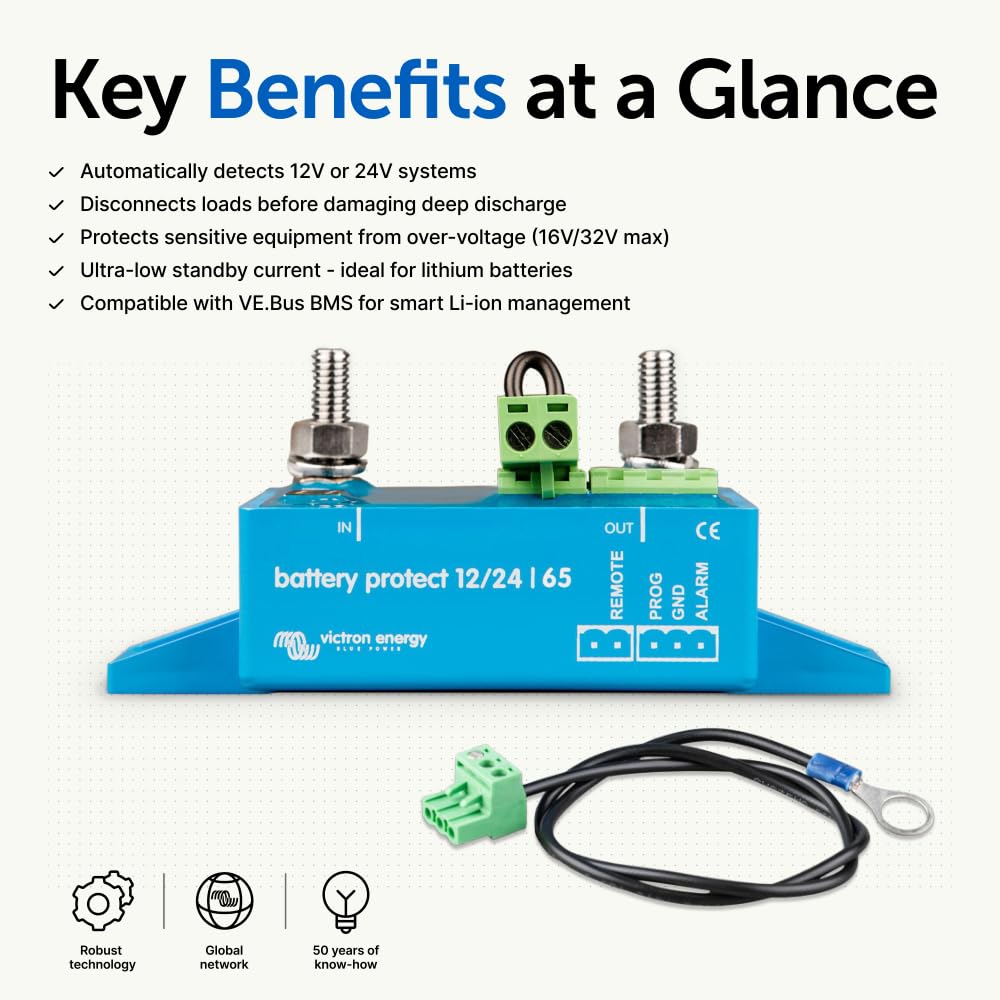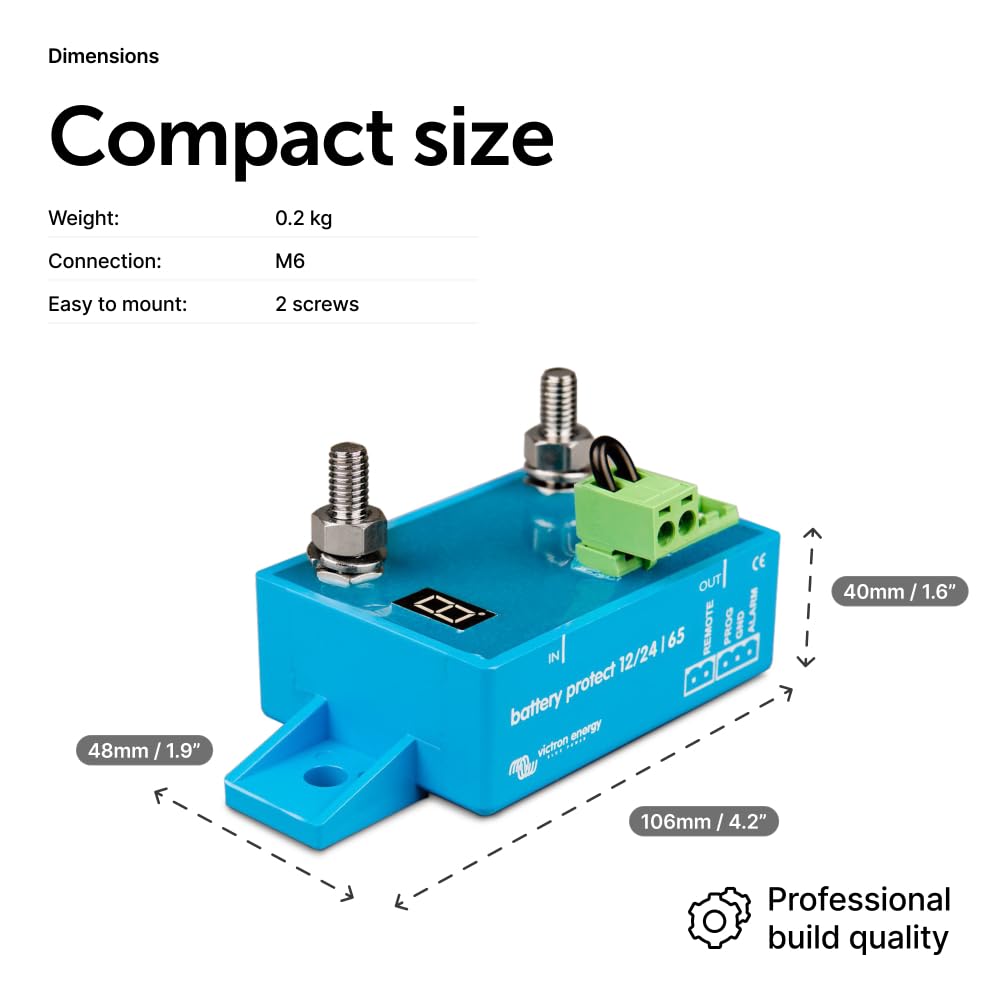Customer Services
Copyright © 2025 Desertcart Holdings Limited
Desert Online General Trading LLC
Dubai, United Arab Emirates







🔋 Protect your power, own the journey.
The Victron Energy BatteryProtect 12/24-Volt 65 amp is a smart battery management device that safeguards your battery by disconnecting non-essential loads before deep discharge. It supports continuous currents up to 65 amps and peaks at 250 amps, automatically detects system voltage between 12 and 24 volts, and offers customizable voltage cut-off settings displayed on a clear 7-segment screen. Ideal for professionals seeking reliable battery protection and longevity.



| Manufacturer | Victron Energy |
| Brand | Victron Energy |
| Model | Victron Energy BatteryProtect 12/24-Volt 65 amp |
| Item Weight | 7.4 ounces |
| Product Dimensions | 1.57 x 4.17 x 1.89 inches |
| Item model number | BPR000065400 |
| Is Discontinued By Manufacturer | No |
| Manufacturer Part Number | BPR000065400 |
| Safety Rating | Não Aplicável |
| Amperage | 65 Amps |
| Voltage | 12 Volts |
Trustpilot
3 weeks ago
3 days ago